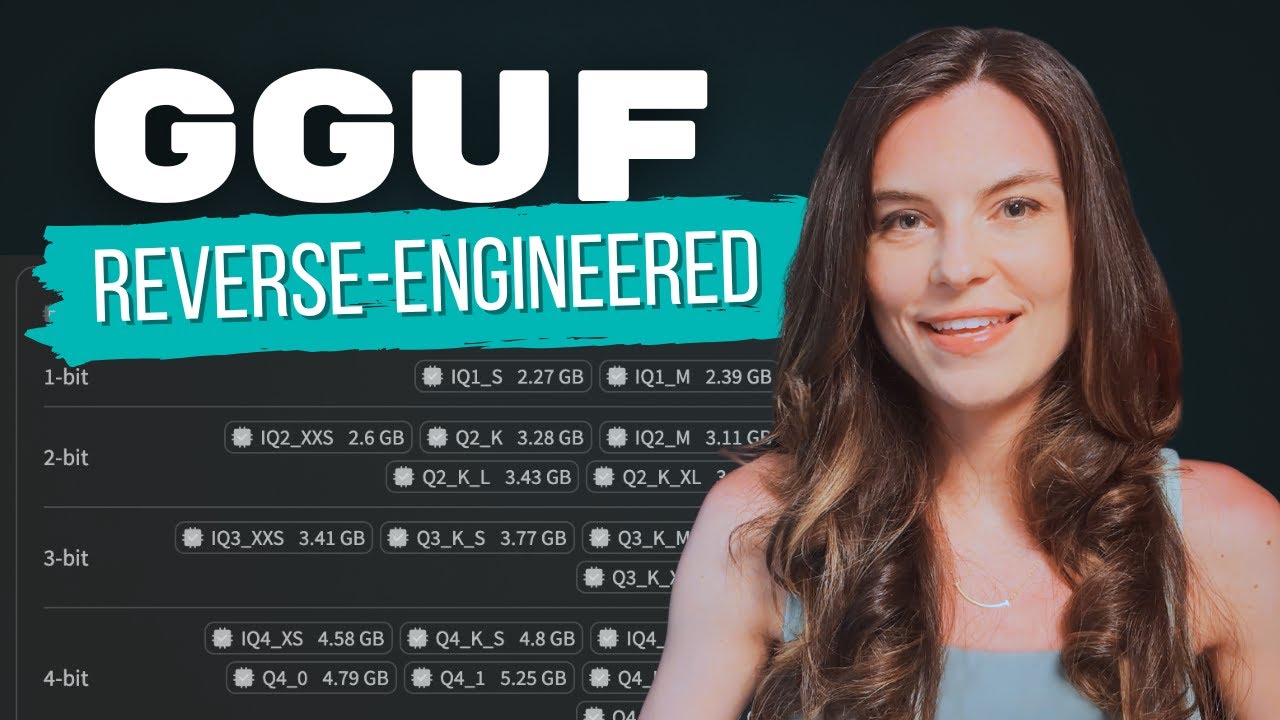The video delves into the GGUF framework’s advanced post-training quantization techniques for llama-like large language models, explaining its evolution from basic block quantization to sophisticated vector quantization methods that optimize model size and accuracy through importance weighting and mixed precision. It highlights GGUF’s role in enabling efficient, privacy-preserving local inference on consumer CPUs while encouraging community collaboration to enhance understanding and development of this complex but powerful quantization ecosystem.
The video explores the complex process of post-training quantization for large language models (LLMs), focusing on the GGUF framework, which is currently the dominant tool for quantizing llama-like models to run efficiently on consumer CPUs. Quantization reduces model size by mapping floating-point weights to lower-bit integers, enabling local inference with privacy and no internet dependency. GGUF, developed by independent open-source contributor Georgi Ganov, is part of a broader ecosystem including GGML, a lightweight tensor library, and Llama CPP, an inference engine. GGUF is not just a file format but represents an entire quantization stack that significantly shrinks model sizes, such as reducing a 700 GB Deepseek R1 model to 100 GB.
The video breaks down the evolution of quantization algorithms in Llama CPP into three generations: legacy quants, Kquants, and Iquants. Legacy quants use basic linear quantization with two types—type zero (symmetric) and type one (asymmetric)—which differ in how they handle the range of weights and quantization constants. These legacy methods apply block quantization, splitting weight matrices into blocks and calculating scales and offsets per block, balancing memory efficiency and precision. Kquants improve on this by introducing a two-level quantization scheme where the quantization constants themselves are quantized, grouped into super blocks to reduce overhead and improve memory access efficiency.
Iquants represent a conceptual shift by treating groups of weights as vectors in multi-dimensional space and using vector quantization with a codebook of reference vectors. This method compresses multiple weights into compact binary codes, achieving higher compression rates. The codebook design cleverly uses only positive coordinates and stores sign information separately to optimize storage and search efficiency. Different Iquant variants (IQ1, IQ2, IQ3, IQ4) adjust parameters like codebook size to balance compression and accuracy. The “I” likely stands for “importance,” linking to the importance matrix concept that enhances quantization quality by prioritizing weights that significantly impact model output.
The importance matrix is a key quality improvement that can be applied across all quantization methods. It assigns importance scores to weights based on their influence on model outputs, derived from calibration data. This allows the quantization process to allocate more precision to critical weights by optimizing dequantization constants through a weighted mean squared error minimization. GGUF further refines this by performing a grid search around scale values to find the best quantization parameters, effectively clipping high-magnitude weights to improve overall accuracy. This approach balances compression with maintaining model fidelity.
Finally, the video touches on mixed precision quantization, where different parts of the model are quantized to varying bit widths depending on their importance, such as using Q4 for most weights but higher precision for sensitive components like layer norms. These size modifiers (small, medium, large) indicate the level of precision allocated, which is crucial for preserving model quality. The presenter acknowledges the complexity and sparse documentation of GGUF, encouraging community contributions to the accompanying GitHub repository to improve understanding and support for this powerful quantization framework.
